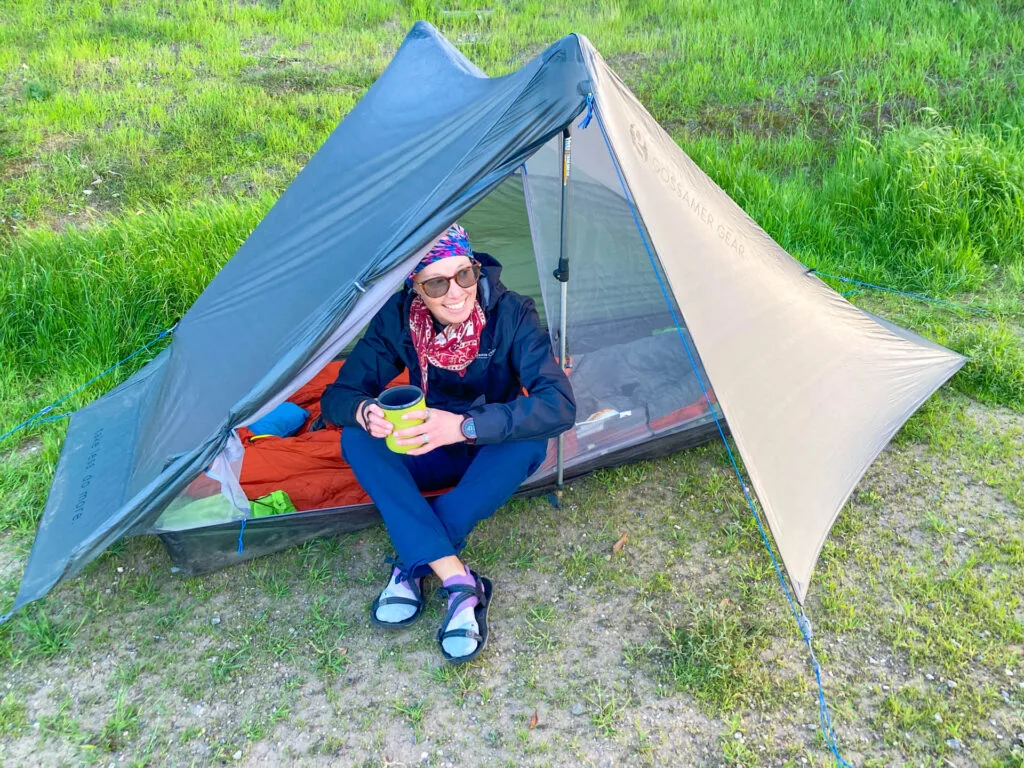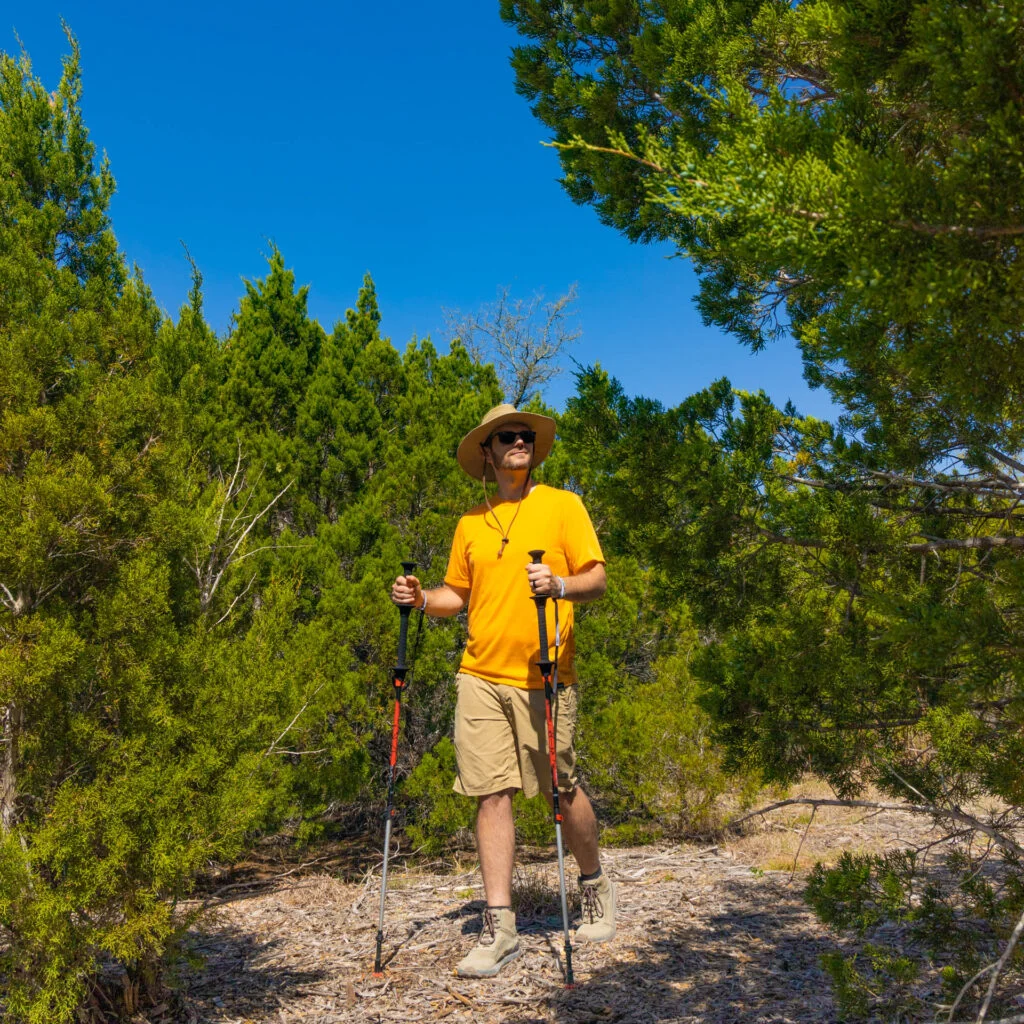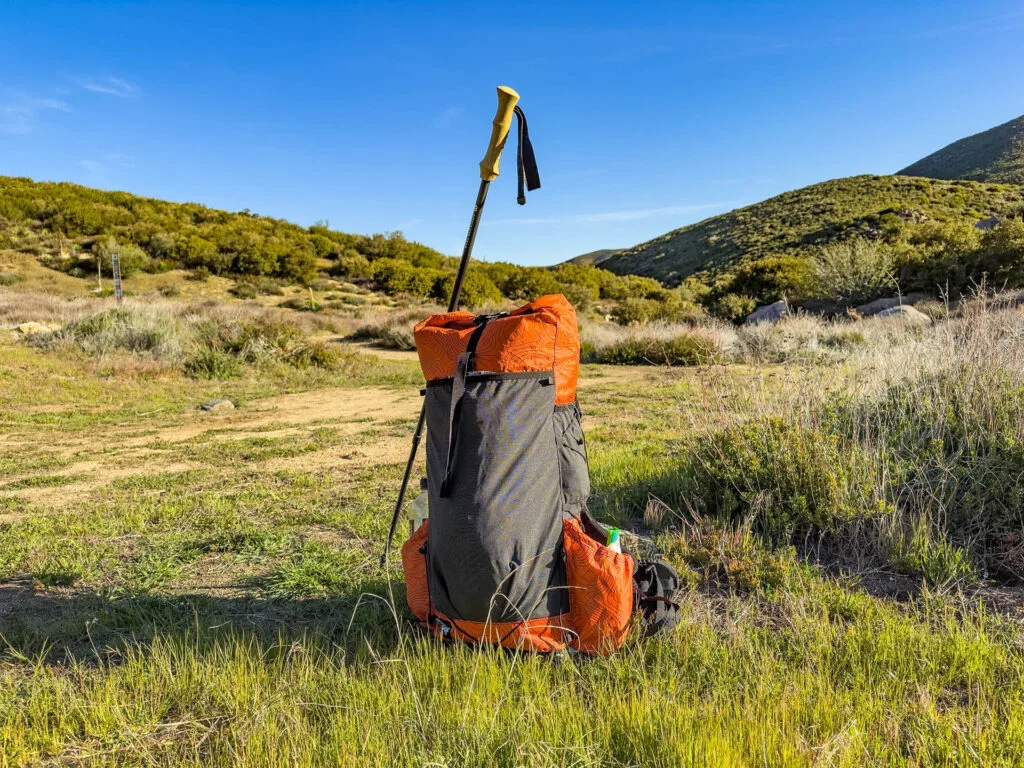REI Anniversary Sale May 16-26 - Up to 30% off plus 20% off member deals!
Watch this video directly on YouTube.
What’s a hiker to do when shopping for trekking poles and one is twenty bucks and the other is $200? What? What they heck is the difference to require such a massive price difference? And are expensive trekking poles even worth it? We break it all down to help you decide if you should save your hard-earned cash for other gear or splurge on fancy new sticks.
What are Trekking Poles For, Really?
Personally, when it comes to trekking poles, I’m a big fan. They invite your arms to the party when you’re hiking uphill, take the pressure off your knees when you’re going down, make pitching your ultralight tent possible if you’re cool like me and carry a rad pole-less dealie like my fave Gossamer Gear The One or Durston X-Mid 2, and you know, do all manner of other things, from helping you keep your balance when crossing a creek to stringing up a clothes line at camp so you can dry your soggy socks after you slipped in anyway.

The point is, trekking poles are great. I love ‘em. You’ll almost never see me backpacking without them. Hiking, eh, maybe. Depends on what kind of incline we’re talking about. But definitely backpacking.
Fortunately, there are approximately four-and-a-half thousand trekking pole options out there. I counted. They’re everywhere. Ultralight trekking poles. Foldable trekking poles. Telescoping trekking poles. Some have cork handles, plastic handles, they’re made of aluminum or carbon fiber or bamboo. There’s literally a trekking pole for every type of hiker.
And when you start browsing the web or the aisles at your favorite local outdoor store, you’re not only gonna see an overabundance of options, you’re gonna see a stupid wide range of prices, too. As in, you might start to wonder “how the heck am I looking at a telescoping stick that costs $19.99 next to one that costs $199.99?” It’s the wild west out there, I’m telling you.
So to help you decide which is right for you, here’s not only what makes up an expensive trekking pole, but tips on deciding whether or not dropping that cash on a pair of sticks is worth it.

Trekking Pole Features
When you’re talking about trekking poles, there are a few features that set different types and brands apart. One is materials. Most poles are either made of aluminum or carbon fiber. Aluminum is cheaper to produce, so that’s usually what you’re gonna see on more budget-friendly poles. Carbon fiber is much lighter, but also more expensive, so chances are, higher priced gear is going to be made of that.
Then you’ve got the handles and straps, which can make a bigger difference than you think. Plastic, cork, even foam is usually used on the handles, which are hopefully in an ergonomic shape. You know, for ease of use. Cork and foam are often more comfortable when you’re using them for longer periods of time, and also less slippery when wet with sweat or rain, but those materials are sometimes more expensive.
Then there are the wrist straps, which are a big concern for some and not at all relevant to others. For example, I’m a wrist strap user. If you use them correctly (by sliding your hand up through the bottom instead of down through the top), they support your wrist better and give you more power when pushing down. If you have weak wrists or arms, a nice big, padded strap can make a huge difference.
But I know plenty of people who would rather give up their left shoelace than put their hands through the wrist straps, so whether a fancy strap–and the fancy pricetag that comes with it–is worth it, is a matter of personal preference. As well as wether you’d like those straps to have a quick-disconnect feature for easy releases.
But the main thing that influences the price of a pair of trekking poles is the design and the metal used. Take a pair of expensive poles, for example. They probably become super compact when collapsed, they’re probably made of carbon fiber so they’re also super light, and if you’re lucky, they come with a great warranty.
As opposed to a $25 pair that probably has no warranty, are heavy, are too long to fit in your luggage even when telescoped to their smallest, and maybe have a slippery plastic handle.
But the real question is: do the features make a more expensive pole worth it? I mean, you could easily shell out a hundo or more on a pair of poles. The answer is… that depends. Mostly on who you are, how much disposable income you have to blow, and what you plan to do with those poles.

Are Expensive Trekking Poles Worth It?
For starters, let me just say that up until recently, I still had cheap aluminum trekking poles I bought at Walmart probably 10 years ago. They were still in great shape when I gave them to a friend. Yup, even after Josh bent one 30 degrees trying to keep himself from falling in a creek in Alaska. We just bent it back–aluminum is forgiving that way–and kept using it.
The handles are fine, even if they’re not exceptionally comfortable and get slick with sweat easily, they’re sturdy, and they’ve lasted through years of use and abuse. Obviously. So anyone who suggests cheap poles aren’t gonna do the job…They’re just plain wrong.
Where these poles aren’t as ideal is during air travel. They don’t fold up small enough to fit in most carry-ons, not that you can carry them on, so you’d have to check them in a pretty large full-size luggage or a nice spacious duffel bag.
Additionally, there are circumstances when the weight difference between cheap aluminum and expensive carbon fiber poles absolutely makes a difference. If you’re going on longer treks–I’m talking a week or longer, maybe even a multi-month thru hike–where you’re likely to frequently lash your poles to your pack to be carried on your back instead of in your hands, well then, now weight starts to matter a little.
If you’re an ultralight backpacker like me, anyway. As such, if I’m not going to be using my poles, I want them to be as light as possible so they’re not adding more weight to my pack. But if you’re the type who almost always has your poles in your hands, then a difference of 6 or 12 ounces for a pair of hiking sticks starts to matter a bit less.
Of course, there’s also the comfort aspect to consider. After using poles with cork or foam handles, I’ve decided I don’t like hard plastic handles. They get slippery when wet and are more prone to cause blisters.

Bottom Line
If there’s a feature like a strap or handle that you like, or you have a hard time with the latches on telescoping poles and think a folding pole would be easier for you–or you’re a fastpacker obsessed with shaving seconds off your gear up and go routine, then spend more if you can afford it and get exactly what you want. You’ll be more likely to actually go hiking and actually take your gear with you when you do. Likewise, if you travel with your gear often or put your poles on your pack as often as you actually use them, spring for sticks that are going to suit your style of hiking and exploring best.
On the other hand, if you’re on a tight budget and you’re not fussy and you just want a pair of good, supportive poles, I’ve got good news for you: A $20 pair is absolutely gonna do the trick.
Here are some of our faves on both ends of the spectrum:
- Gossamer Gear LT5 Carbon Fiber Trekking Poles: Super ultralight.
- TSL Connect Carbon 5: Compact and easily deployable.
- Diorite Gear Telescopic Carbon Fiber Trekking Poles: Easy-to-use flip-locks.
- Cascade Mountain Tech Trekking Pole: Inexpensive and functional.
So gear up, don’t forget your sticks, get out there and wander on.
This post contains affiliate links, which means when you clicky-click and make a purchase, we may receive some compensation. Don’t worry, it won’t cost you any extra, but you will be supporting Terradrift! That’s what we call a win-win!

Mary
Sunday 22nd of September 2024
Good information. I'd like to know what the different tip designs are and which is the best, especially for hiking on rocks. Thanks.
Alisha McDarris
Tuesday 24th of September 2024
Great question. Most tips on cheap and expensive trekking poles are some sort of durable metal material and are fairly similar in design. And most poles will come with various accessories, including rubber "shoes" that tend to be my favorite option for hiking on rocks so you don't hear a constant clicking and tapping sound every time you plant your poles. Hope that helps!